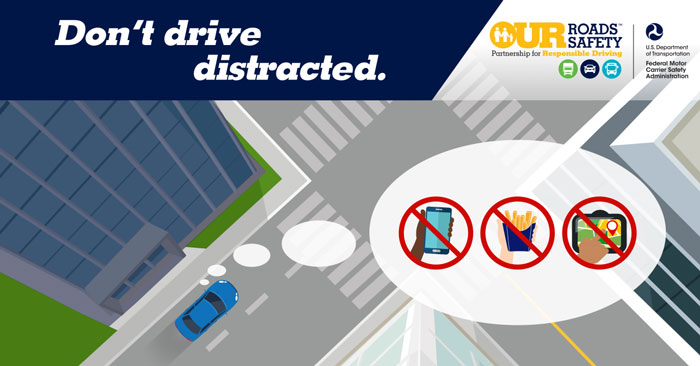April is National Distracted Driving Awareness month. While professional drivers are held to a different standard of safety expectations, it is everyone’s responsibility to drive safely. We all share the same roadways and should avoid distractions when behind the wheel.

On average, nine people die every single day from distracted driving, and AAA says that distracted driving now accounts for 25 to 50 percent of all accidents. This is a growing epidemic that is entirely preventable.
Cell phone usage is at the top of the list in terms of dangerous distractions. According to the National Safety Council, using a cell phone while driving increases your risk of crashing by four times. Even sending one text while operating a vehicle at 55 mph is like driving the length of a football field with your eyes closed. We can all agree how dangerous that is, but some other in-vehicle distractions may not seem so obvious. Generally, any time you’re multitasking while driving, it’s likely that you are distracted.
Some of the most common distractions include:
- Texting or using a cell phone
- Talking on the phone, even with a hands-free device
- Eating or drinking
- Reaching for items in the glovebox, a bag, the backseat, etc.
- Talking to passengers
- Adjusting the radio or temperature
- Checking your GPS or map
- Taking pictures
- Grooming or applying makeup
- Loud or disruptive passengers
When traveling in work zones, it’s even more crucial to avoid all distractions. National Work Zone Awareness Week is April 26-20. While in work zones, stay alert, keep your distance, and slow down and drive the posted speed limit.
You are distracted any time your mind and/or eyes are off the road. You cannot drive safely unless the task at hand has your full attention. If you absolutely must make a call, send a text, or adjust your GPS, pull over to the side of the road.